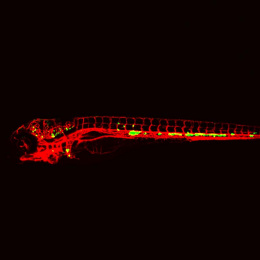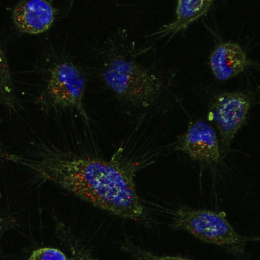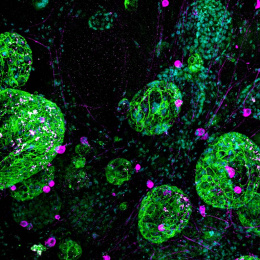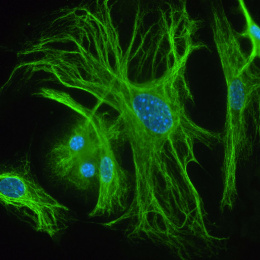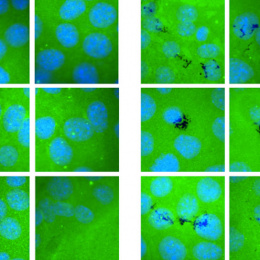Heads or Tails: Measuring Changes in Metastatic Behavior
Heads or Tails: Measuring Changes in Metastatic Behavior
Collections: Image Award Winners, Metastasis
2018 Award Winner
David Benjamin, Richard Hynes
Koch Institute at MIT, MIT Department of Biology
Metastasis, the process by which cancer spreads throughout the body, is more than random chance. Cancer cells can activate specific genes to aid in this dissemination. The Hynes Lab is using transparent zebrafish embryos to determine how the oncogene YAP changes the behavior of tumor cells (green) as they move through blood vessels (red).
After injection, control cells become trapped in narrow vessels in the tail and are taken out of circulation. Cells that over-express YAP, however, are able to move through these vessels and disseminate more widely, often settling in the brain, a common metastatic site. These findings will help explain how cancer spreads to distant organs.
This image was acquired using a Nikon A1R confocal microscope.
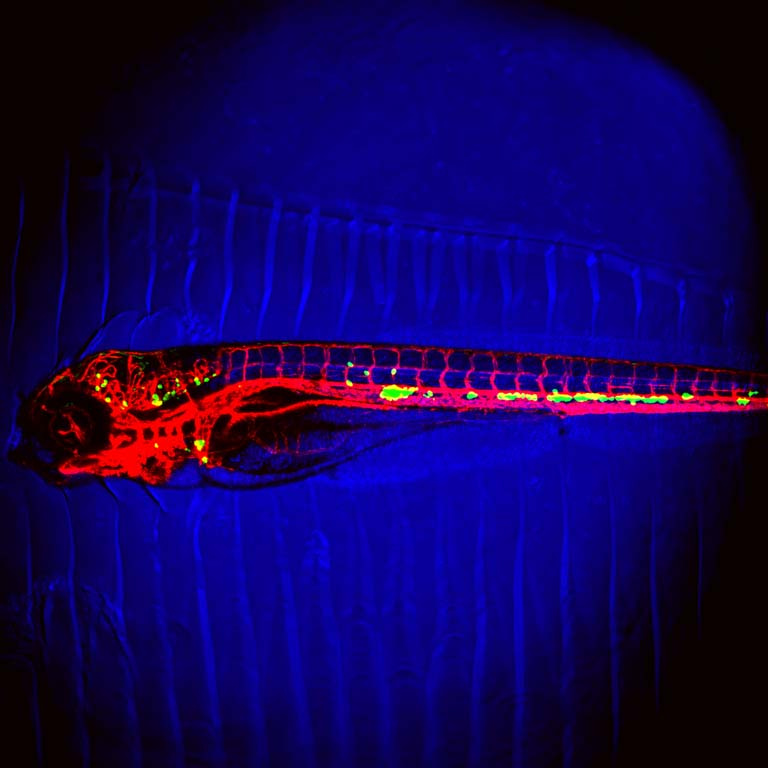
Video
David Benjamin shares the story behind his award-winning image. You can also watch his presentation from the exhibit opening on March 8, 2018 here.
